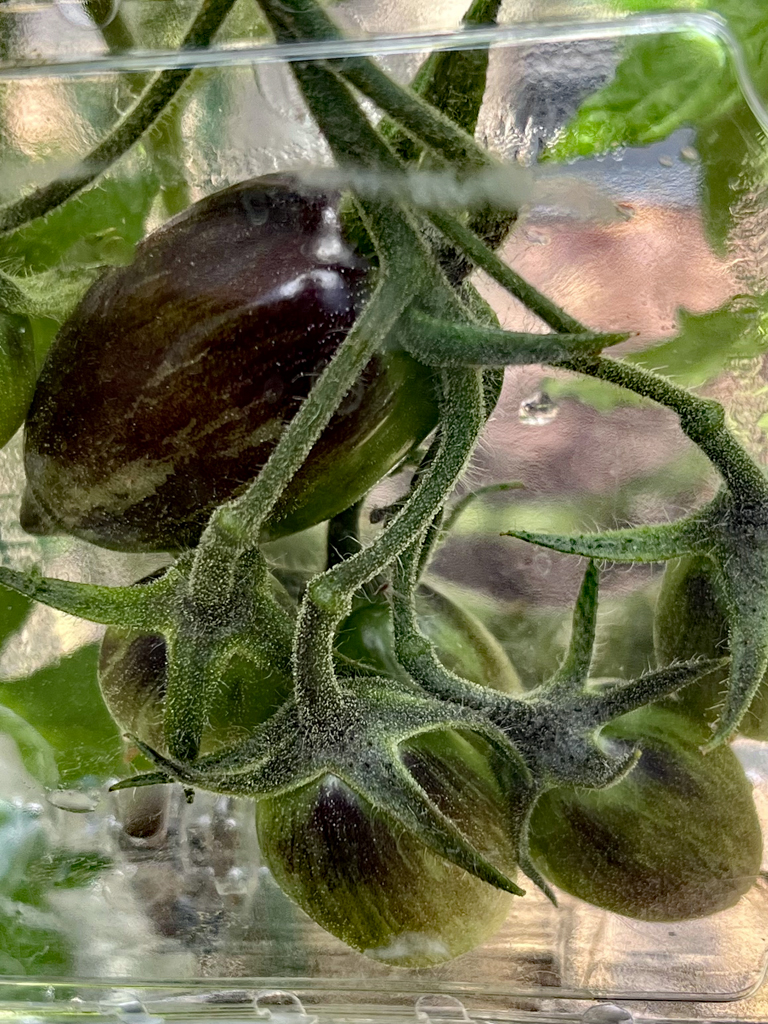A friend called these my “pre-packaged tomatoes”. I’ve posted this tomato protection tip on my Instagram and had a great response and messages so I’m sharing what I did in this article.

Tomato Protection Tip – Photo © The Gourmantic Garden
Last summer, I struggled with some unidentified critter (possum/rodent/big bird/flying fox/gremlin) chewing through my fruit protection bags. So I used two, carefully wrapping tomatoes in an organza bag and another mesh fruit protection bag. They still destroyed both and damaged the fruit. After losing so many tomatoes and waking up to chewed fruit and bags almost on a daily basis, I resorted to wrapping the tomatoes in old fly screen mesh that I had lying around. While it protected the tomatoes from getting chewed, it warped the fruit and prolonged the ripening process. It wasn’t a great solution and as such, I don’t recommend you do it.
This season, I’m applying a better and more sustainable approach. I’ve found a second use for those clear, plastic disposable oyster packaging that you usually get and throw out when you buy tomatoes, berries and the likes. As soon as the fruit forms, I carefully enclose it in a container making sure that the stem is placed where there is gap to prevent damaging the tender stem.

Tomato Protection Tip – Photo © The Gourmantic Garden
I’ve done the same for my lemons during the winter months using larger containers and it has proved to be successful. As the lemons grew in size, I upgraded to a larger container. So if you give this tomato protection tip a go, keep an eye out on the size of the tomato or whatever fruit you’re covering and go up in container size if need be. I’m planning on using it on my baby eggplant, dianella berries, peppers and beans.

Tomato Protection Tip – Photo © The Gourmantic Garden
While it may not look pretty to have fruit encased in clear plastic containers, it provides the needed protection and gives single use plastic another use.

